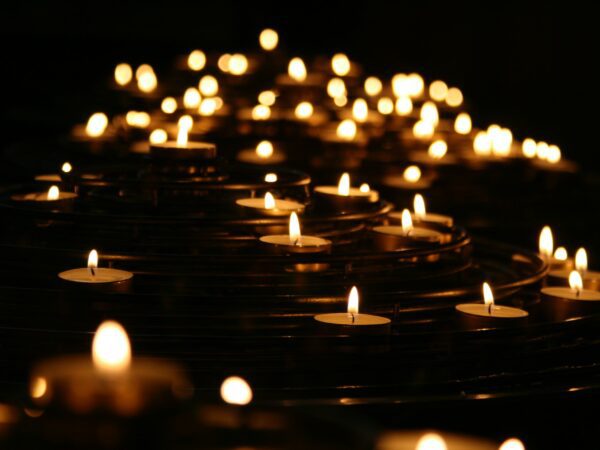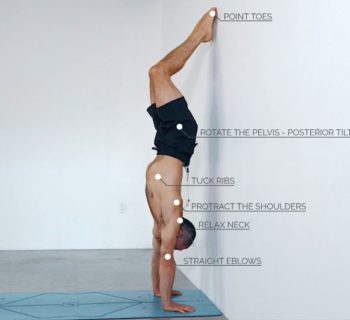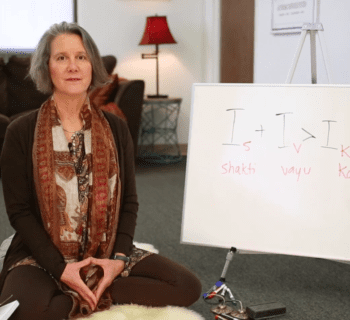When I teach yoga, I often say to my students “as you are.” For example, “as you are, breathe in through your nose and out through your mouth.” What I really mean is something much deeper than that. As you are — whatever you brought with you to this mat and this practice, whatever your body is today, whatever emotional or spiritual energy you have with you, we can work with it because as you are, right now, is exactly as you are supposed to be.
This month, Ramadan, is one of deep inward reflection for Muslims. For many non-Muslims, the month of Ramadan immediately suggests a time of fasting, hardship, and deprivation. Perhaps for those very reasons, many of my non-Muslim friends are shocked to hear that I maintain my same yoga teaching and practice schedule throughout my observance of Ramadan. They are indeed correct that Ramadan involves fasting — from dawn to sunset, Muslims, myself included, refrain from the intake of food and drink and even abstain from bodily pleasures of intimacy. And they are certainly correct that this is a deprivation and can be a hardship, but the result is a time of deep cleansing and renewal and the effect supports and enhances my yoga practice. My yoga practice is deeper and more spiritual than it is at any other time of the year. Yoga and Ramadan bring out the best in each other and the combination brings out the best in me.
When I teach yoga, I often say to my students “as you are.” For example, “as you are, breathe in through your nose and out through your mouth.” What I really mean is something much deeper than that. As you are — whatever you brought with you to this mat and this practice, whatever your body is today, whatever emotional or spiritual energy you have with you, we can work with it because as you are, right now, is exactly as you are supposed to be.
“As you are” takes on an even deeper meaning to me during the month of Ramadan, because it is a month stripped bare of distractions. We spend a lot of time distracting ourselves from who we are. For many of us, we are not comfortable facing who we truly are, so we distract ourselves with food, alcohol, sex, curated, online personas of ourselves, memories of what we once did, anxieties about what we might one day do. In fact, we have any number of tools at our disposal to keep us from facing the stripped down truth of who we are, as we are, at any particular moment. Yoga provides one framework for accessing our true selves, as we are, by penetrating and examining the five koshas, or sheaths, that overlay our true selves. The observance of Ramadan helps us strip away the distractions and focus on each kosha.
Annamaya is the physical layer, our flesh and bones. During Ramadan, we fast during daylight hours and make careful choices to hydrate and nourish ourselves during the precious few hours between sundown and dawn, mindful of the delicate balance with our bodies’ countervailing need for sleep. Making the right choices involves a keen understanding of our physical selves, where our body is on that day and in that moment.
Pranayama is our energetic layer, manifesting through the breath as a symbol of the energy of life. Islam encourages us to find balance in our lives and, during the month of Ramadan, we are asked to fast from the worldly desires that may, at other times, overtake us and throw us out of balance. During this month, we fast from temptations, anger, and aggression. Instead, we prioritize compassion, kindness, giving, and community involvement. This renewed focus cleanses our energetic selves.
Manomaya is the mind, our means to self-identify, and Vijnanamaya is our intellect and wisdom. During the month of Ramadan, we increase our practices of reflection, contemplation, meditation, devotion, and prayers. Our increased prayer practice forces us out of the daily bustle and drops us into ourselves. This inward focus quiets the noise of our daily lives and connects us deeply with our own spiritual beliefs. Free from that noise, we understand who we are and we grow the intellect and wisdom that supports us on our path.
Anandamaya is the absolute truth, our true self, as we are, at this moment. These daily practices purify our body, our mind, and our soul. Ultimately, they help us pull back the curtains we wrap around ourselves and face the reality of who we are. It might not be quite who we thought. It might not be an Instagram-perfect reality. It might be something we’ve been avoiding. But finding our true self is important because it links us to God. Believing in God requires you to find yourself and believe in yourself, after all, you are the only version of yourself that He made. To ignore or hide your true self is to ignore God. To change yourself or avoid your true self is to assume that God made a mistake in creating you. He didn’t. We tend to look for things in the wrong places, God included. In Arabic, we say Allah for God, pronounced al-Luh. When we say it over and over, it mimics the sound of our own beating heart. Our own heart is the best place to find our connection to God.
So, find your true self and celebrate what you find. You may not be perfect, but you are as you should be, right now.
Practice with Ahmed on Omstars
By Ahmed Soliman

Before I found yoga and began teaching, I was a wildlife biologist and environmental scientist. Serving the natural environment and helping to recover endangered species was my way of giving to a greater good. This is a concept that I’ve carried daily into a yogic lifestyle, both in teaching and in practice. I seek to serve this community in a way that supports strength, healing, and sustainability. After having multiple knee surgeries due to a car accident, I myself sought these qualities from my own encounter with yoga. I had to transition from contact sports like soccer to the safer and deeper space that the practice provides. A continuing student of Iyengar yoga, vinyasa, and meditation, I believe that awareness of breath, knowledge of the body, and mental focus on the mat lead to mindfulness and living harmoniously off the mat. I draw from my own experience and the study of human anatomy to offer a safe and grounded space for practitioners. I endeavor to help them explore their physical boundaries with a focus on intelligent alignment, awareness of breath, and steadying or relaxation of the mind. I have studied with Nikki Costello, Nikki Vilella, Magi Pierce, and other influential teachers. I am an ERYT-200 hour yoga alliance certified teacher with additional specialized training in anatomy, meditation and yoga nidra. Connect with Ahmed on Instagram or http://yogisoli.com/










